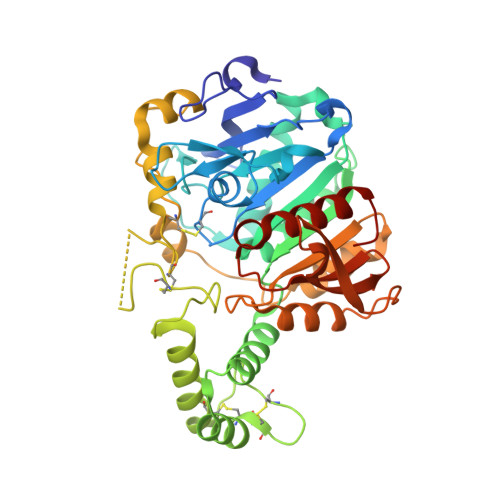Proteolytic activation of human cathepsin A.
Kolli, N., Garman, S.C.(2014) J Biological Chem 289: 11592-11600
- PubMed: 24599961
- DOI: https://doi.org/10.1074/jbc.M113.524280
- Primary Citation of Related Structures:
4MWS, 4MWT - PubMed Abstract:
Galactosialidosis is a human lysosomal storage disease caused by deficiency in the multifunctional lysosomal protease cathepsin A (also known as protective protein/cathepsin A, PPCA, catA, HPP, and CTSA; EC 3.4.16.5). Previous structural work on the inactive precursor human cathepsin A (zymogen) led to a two-stage model for activation, where proteolysis of a 1.6-kDa excision peptide is followed by a conformational change in a blocking peptide occluding the active site. Here we present evidence for an alternate model of activation of human cathepsin A, needing only cleavage of a 3.3-kDa excision peptide to yield full enzymatic activity, with no conformational change required. We present x-ray crystallographic, mass spectrometric, amino acid sequencing, enzymatic, and cellular data to support the cleavage-only activation model. The results clarify a longstanding question about the mechanism of cathepsin A activation and point to new avenues for the design of mechanism-based inhibitors of the enzyme.
- Department of Biochemistry and Molecular Biology, University of Massachusetts, Amherst, Massachusetts 01003; Program in Molecular and Cellular Biology, University of Massachusetts, Amherst, Massachusetts 01003.
Organizational Affiliation:


















